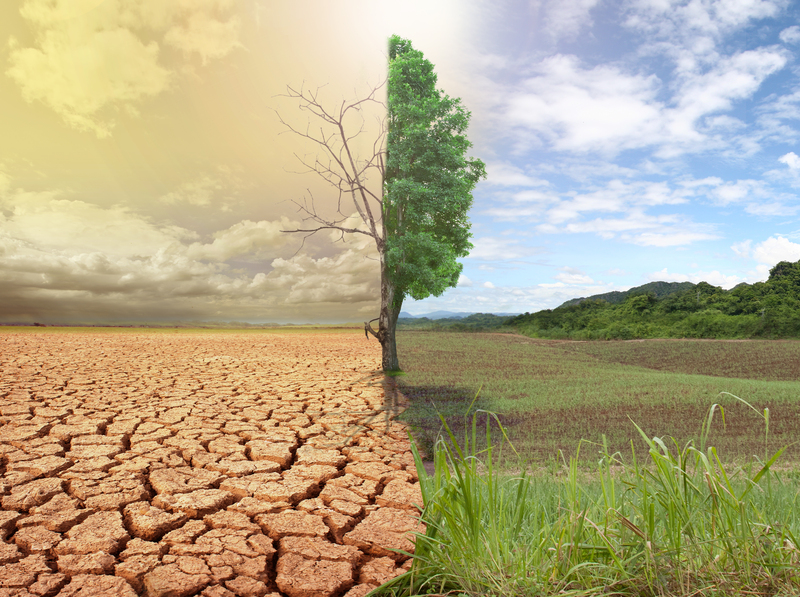Tracing the History of Waste Through Changing Times
Waste is an inevitable byproduct of human activity, yet our relationship with refuse has evolved dramatically alongside civilization itself. By tracing the history of waste through changing times, we gain critical insight into how societies have managed their discards, adapted innovations, and developed new perspectives on sustainability. This comprehensive exploration delves into the origins, developments, and turning points in the way we create, categorize, and control waste--ultimately helping us shape a cleaner future.
The Earliest Forms of Waste
Long before the advent of modern civilization, our earliest ancestors generated waste, albeit in limited quantity and environmental impact. In the Paleolithic era, hunter-gatherers produced mostly biodegradable waste, like food remains and primitive tool debris. The absence of permanent settlements meant that accumulation was minimal, and nature quickly recycled organic detritus.
- Bone fragments and shells from hunting and gathering have been found in ancient middens--essentially prehistoric garbage dumps--showing early forms of organized disposal.
- Natural decay kept waste manageable; there were no plastics or synthetic pollutants.
The Agricultural Revolution and Settlement Waste
With the onset of agriculture around 10,000 BC, humans began forming permanent settlements, leading to significant changes in waste production and management.
- Permanent villages began accumulating not just organic refuse, but also broken pots, tools, and rudimentary construction debris.
- Archaeological excavations of sites like Catalhoyuk in Turkey reveal layers of household discard, attesting to a growing challenge in early waste management practices.
- Some Neolithic communities developed early forms of landfill, creating designated dumping areas on settlement outskirts.

Ancient Civilizations and Organized Waste Systems
As urban centers blossomed in Mesopotamia, Egypt, and the Indus Valley, the concentration of people and industries intensified the challenge of keeping cities clean. The earliest records of waste regulation and organized disposal emerge from this period.
Urban Waste Solutions in Antiquity
- Mesopotamia (c. 3500 BC): Archaeological finds reveal trash pits and basic sewers, indicating public concern for sanitation and disease prevention.
- Ancient Rome: The Romans introduced citywide street cleaning and laws requiring residents to dispose of litter responsibly. The Cloaca Maxima, among the world's earliest sewer systems, carried waste away from populated zones.
- Ancient Athens: Passed local ordinances against waste dumping. Dedicated collection points and primitive carting were in place by the 5th century BC.
These innovations underscore the understanding that managing waste was pivotal for public health and urban sustainability. However, most waste was still organic or easily degradable--in a distinct contrast to modern waste streams.
Medieval to Early Modern Era: Out of Sight, Out of Mind
During the Middle Ages in Europe, cities swelled while effective waste management lagged behind. The lack of comprehensive infrastructure led to unsanitary conditions and recurrent outbreaks of disease.
- Open sewers and refuse heaps lined city streets. Waste was often dumped directly out of windows and doors.
- "Night soil" collectors emerged--enterprising individuals would remove human waste at night for use as fertilizer.
- Plague and public unrest prompted occasional, largely ineffective, municipal cleanups.
By tracing the history of waste through changing times, it's clear that medieval societies often possessed an out of sight, out of mind approach, with devastating consequences for health and hygiene.
Renaissance to Industrial Revolution: The Waste Problem Grows
With population growth and urban expansion during the Renaissance and Enlightenment, the volume and variety of waste multiplied. The onset of the Industrial Revolution (late 18th century) introduced unprecedented quantities of non-biodegradable byproducts.
- Mass-produced goods led to more packaging and discards, especially glass, metal, and textiles.
- Coal ash and chemical wastes became new environmental hazards.
- City governments began experimenting with systematic waste collection. Paris established one of the first municipal waste collection services in 1884.
The Rise of Municipal Sanitation and Modern Landfills
The 19th and 20th centuries marked revolutionary advances in our relationship with refuse. Widespread outbreaks of cholera and typhoid fostered a new science of public health--and a reevaluation of how societies should deal with their waste.
The Birth of Waste Collection Services
- London's "Dust Yards": In 19th-century London, ash from coal fires was collected and repurposed for brickmaking--a form of early recycling.
- Edwin Chadwick's Reports: His 1842 treatise connected urban filth with disease, spurring the Public Health Act of 1848 and more robust municipal waste services.
By the mid-20th century, cities globally established standardized trash pickup, street cleaning, and drainage systems.
The Invention of the Modern Landfill
- The Fresh Kills Landfill on Staten Island, opened in 1948, was one of the world's largest municipal dumps, emblematic of shifting to centralized waste disposal.
- Sanitary landfills replaced open dumps, using liners and layers of soil to contain refuse and reduce health hazards.
These developments represented a new chapter in the history of waste through changing times, where responsibility for disposal shifted from individuals to the collective city or state.
Plastic: A Double-Edged Sword in Waste History
The post-World War II era unleashed a torrent of synthetic materials, the most ubiquitous being plastic. This innovation revolutionized consumer goods, packaging, and medicine but posed an unforeseen waste management crisis.
- Plastic's durability meant products lasted longer--sometimes far longer than desired when it came to disposal.
- By the late 20th century, plastic pollution in oceans, rivers, and landscapes became an escalating global issue.
Society found itself at a crossroads: innovations that improved life's convenience also demanded new stewardship strategies to mitigate their waste footprint.
The Recycling Movement
Public consciousness about waste peaked in the 1970s and 80s, as environmental movements emphasized the need for recycling and waste reduction.
- The first Earth Day in 1970 galvanized community-driven cleanup efforts and led to the establishment of curbside recycling programs worldwide.
- Legislation targeting litter and packaging encouraged both manufacturers and consumers to rethink throwaway culture.
As we trace the history of waste through changing times, the rise of recycling stands out as a pivotal turning point--a societal embrace of the three Rs: Reduce, Reuse, Recycle.
Waste in the Digital Age
Contemporary society faces both new and enduring challenges in waste management. Today, technology has changed the nature and scale of the waste we produce.
E-Waste: The New Frontier
- Obsolete electronics--smartphones, computers, TVs--create fast-growing e-waste streams.
- Improper disposal introduces hazardous substances, but also recoverable metals and valuable raw materials.
- Programs to recycle electronic waste and promote sustainable design are gaining momentum, but lag behind production rates.
Global Waste Trade
As affluent nations implemented stricter waste regulations, large volumes of plastic and hazardous materials began flowing to developing countries, intensifying debates about environmental justice and cross-border responsibility. Recent years have witnessed landmark decisions like China's National Sword Policy, disrupting global recycling markets and prompting nations to confront their own discard challenges.
Waste, Culture, and Societal Change
Our attitudes toward waste reflect broader social values, ethics, and technological capability. Zero-waste movements, circular economy initiatives, and "right to repair" campaigns exemplify shifting priorities in the 21st century.
- Zero-waste lifestyle choices challenge individuals to minimize landfill-bound rubbish.
- Industries explore circular models--designing products to be reused, refurbished, or recycled--breaking away from the old linear model of "take, make, dispose."
- Pioneering cities like San Francisco and Kamikatsu, Japan are setting ambitious targets for landfill diversion, demonstrating what's possible with community participation.
Environmental and Economic Implications
Why does tracing the history of waste through changing times matter? Beyond sheer volume, waste shapes our landscapes, communities, and economies:
- Environmental hazards arise when waste is mishandled--polluting waterways, soil, and air, and endangering wildlife.
- Land scarcity and landfill overload threaten urban planning and quality of life.
- Well-managed waste streams can generate green jobs, fuel energy recovery, and supply industrial recyclers.
- Resource conservation: Extracting value from discards through composting, recycling, and energy capture closes the loop on finite resources.

Lessons Learned and the Path Forward
If history teaches us anything, it's that waste is as much a social issue as a technical one. As we collectively chart a course for future generations, several principles emerge from the long arc of our changing waste history:
- Prevention trumps treatment: The cleanest waste is that which is never produced.
- Technological innovation must be matched by sound policy, cultural buy-in, and equitable enforcement.
- Solving global waste challenges requires international cooperation--no nation is isolated from the environmental impacts of waste.
- Community engagement and education are vital--empowering citizens to reduce, sort, and responsibly manage their own discards.
The Ongoing Story of Waste
The journey of waste through the ages echoes the evolution of human ingenuity and responsibility. From the simple bone middens of prehistory to the complex global waste streams of today, each era reflects our changing priorities and abilities to solve one of humankind's oldest challenges.
As we stand on the threshold of new technologies--like smart materials, advanced recycling, and waste-to-energy systems--the next chapter in the history of waste will be shaped by our collective will to balance progress with stewardship of our planet.
Conclusion: Reimagining Our Future with Waste
Tracing the history of waste through changing times highlights not only our missteps and achievements, but also the pressing need to reinvent our approach for the 21st century and beyond. Waste is not merely an environmental burden--it is a mirror of our values, priorities, and creativity.
By understanding our past, confronting our present, and innovating for the future, we can transform waste from an intractable problem into a resource--fueling prosperity and sustainability for generations to come.
Are you ready to be part of the next chapter in the story of waste? Learn about local recycling programs, support zero-waste businesses, and advocate for responsible waste management policies in your community.